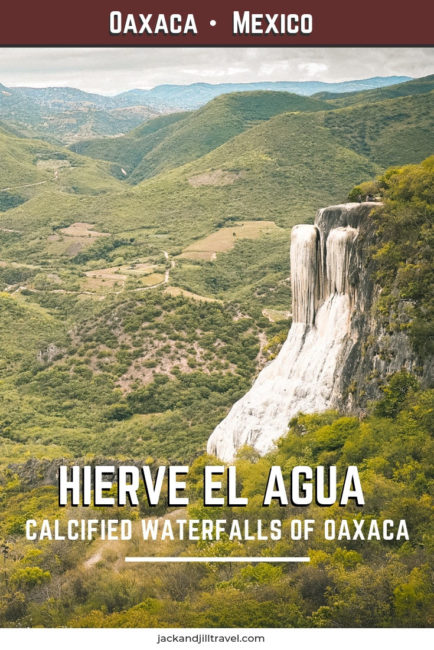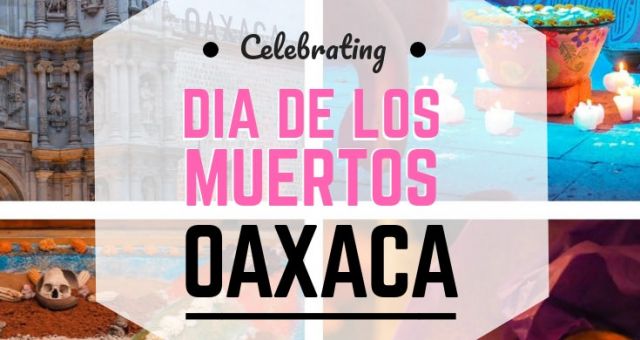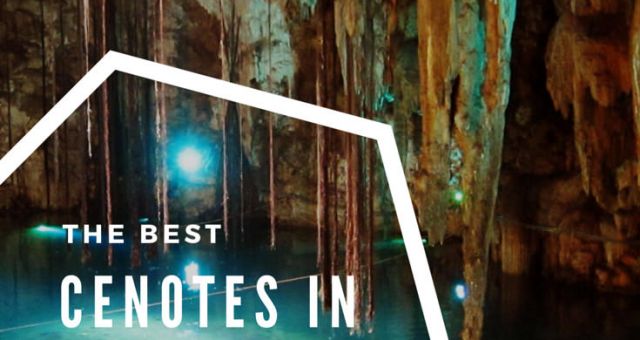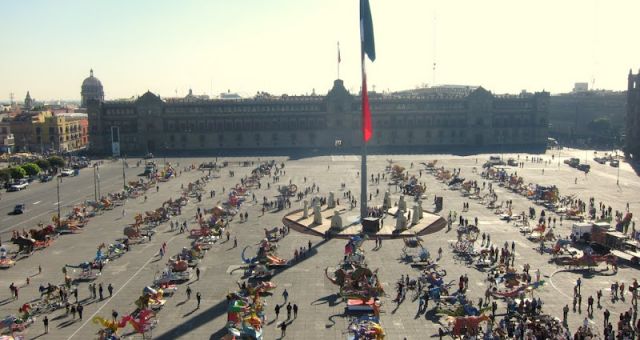Hierve el Agua and its calcified waterfalls is an easy and enjoyable daytrip from Oaxaca. My mom and I visited Hierve el Agua while in Oaxaca during Dia de Los Muertos celebration. Since most of the activities related to the event happen in the evening we were free during the day to explore Oaxaca and surrounding area. The daytrip to these frozen, calcified waterfalls turned out to be one our favorite things we did in Oaxaca. They’re really quite spectacular. You shouldn’t miss it.
Hierve el Agua is an easy daytrip from Oaxaca City
What’s in A Name – What is Hierve El Agua?
In Spanish, hierve means to boil. To hear the name “Hierve el Agua waterfalls” one can be forgiven to expect seeing boiling water cascading down the cliffside. It turned out the name is slightly misleading. Even though the water does bubble out the rock, it’s not boiling – instead it is a pleasant 26-27 degree Celcius.
The spring water contains all sorts of mineral. As this mineral-rich water makes its way down the cliffside to the valley below, it evaporates leaving the minerals behind, similar to how stalactites and stalagmites form. Instead of hanging from a cave ceiling, this deposit coats the side of the cliff and looks like white, frozen waterfalls from a distance.
What to Do at Hierve el Agua
At the Hierve el Agua site, there are 2 falls to visit: cascade grande and cascada chica. A trail goes from the parking lot and connects these 2 falls. Keep following the trail downhill and you’ll find yourself at the bottom, looking up at the frozen falls. I highly recommend doing the extra hike if you have the time.
Three mineral pools sit at the top of cascade grande, the minerals in the water giving them yellow and greenish hues. You’re allowed to swim in these pools and there’s a changing room nearby.
Swimming at the mineral pools at Hierve el Agua
Because we were there during the popular Dia de Los Muertos week, the site was already crowded. We thought 7:30am departure from Oaxaca would be early enough to beat the crowd, but we were wrong. There were lines of Instagram stars waiting to take pictures on the edge of the waterfalls. Naturally, we joined the line.
My mom and I waited behind a party taking engagement photos and after they were done, we made our way to the edge. There was a line of people behind us and my mom – not wanting to make people wait too long – slipped in her rush. Instead of falling down like a normal person though, she decides to flail her arms around while her feet scrambling to find purchase. As she was teetering trying to catch her balance, I had a moment of panic when I realised how close she was getting to the edge. The dreadful news headline flashed in my head, “Woman falls off a waterfall taking pictures while daughter watches.”
Thankfully she made it we could now laugh about the incident.
From a viewpoint past the cascada chica (the lower falls)
How to Get to Hierve el Agua from Oaxaca City
Cheapest: Take a collective (shared taxi). You can find these purple and white cars outside the baseball stadium (Estadio Eduardo Vasconcelos) in Oaxaca. The ride to Mitla costs 25 MXN per person and it takes about 2 hours. From Mitla, you get on a pickup truck to Hierve el Agua that costs an additional 40 MXN per person. This is a very popular route and you’ll find people directing to where you need to go.
Easiest: Join a tour. The easiest way to visit Hierve el Agua from Oaxaca is by taking an organized tour that visits other sites along the way such as: the giant Tule Tree, a carpet factory, the ruins in Mitla, and a Mezcal factory. Most hotels and hostels offer this tour. You can book it online here.
What we did: We hired a driver for 250 MXN per hour to do basically the same itinerary as most day tours but with some alterations. This allowed us to go at our own pace. We found the driver through our Airbnb host but we learned that pretty much any taxi driver will moonlight as a private driver for 200 – 250 MXN per hour.
Cost: Parking at the spring is 50 MXN per car and entrance fee to the site is 25 MXN per person.
Other Places of Interest on the Way to Hierve el Agua
The long road from Oaxaca to Hierve el Agua passes a few of sights worthy of stops. Any organized Hierve el Agua tour from Oaxaca will include most if not all of the stops below:
The giant Tule Tree (El Árbol del Tule). This tree is located in the church grounds in the town center of Santa María del Tule and is reported to be the widest tree in the world – beating the giant sequoia in California. Local Zapotec legend holds that it was planted about 1,400 years. It’s surrounded by a gate and you need to pay to enter if you choose. Seeing it from outside the gate is always an option.
Carpet factory in Teotilan. Depending on your interest, this might or might not be something worth stopping for. My mom and I, but specially my mom, have an obsession over textile so we enjoyed learning about the weaving tradition of Oaxaca. We drooled over some beautiful carpets made using traditional dyes made of plants and insects. Unfortunately they were all outside our price range. There are different carpet workshops in the area and which workshop you visit depends on your guide.
The pre-Colombian ruins of Mitla. Mitla is known for its intricate mosaic work and geometric designs that cover tombs and entire walls. These mosaics are made from small, finely cut stone pieces which have been fitted together without the use of mortar (sources) – a fact I wasn’t aware of when I visited. Now that I know, I’m even more amazed.
The 16th century church in San Jeronimo Tlacochahuaya. Simple on the outside but with beautifully painted ceiling interior.
Mezcal distillery. We didn’t do this since we went on a mezcal tasting just the day before and decided that mezcal is pretty gross (but hey, you do you). I prefer whiskey.
You can visit all of the above on this tour.
Dia de Los Muertos
If you’re visiting Oaxaca for Dia de Los Muertos celebration, I have a guide to getting the most of out your visit here.
—
If you’re ever in Oaxaca, a daytrip to Hierve al Agua is an excellent idea. It’s easy, straightforward, and the scenery – as you can see – is pretty amazing.





Questions and Comments
Comments are disabled. If you have any questions about the post, you can DM me on Instagram: @jacknjilltravel.